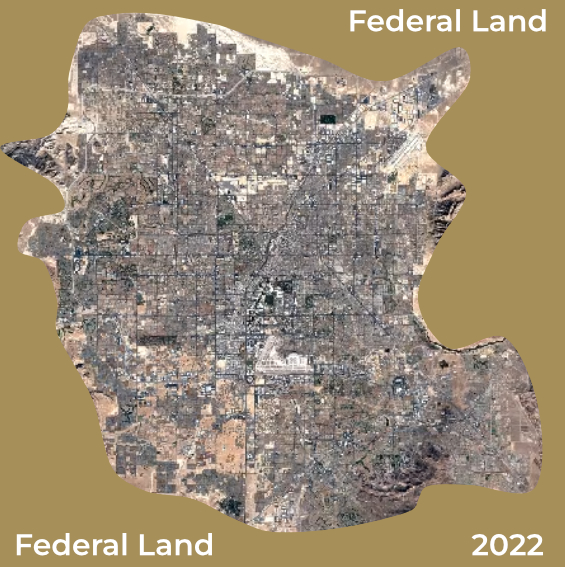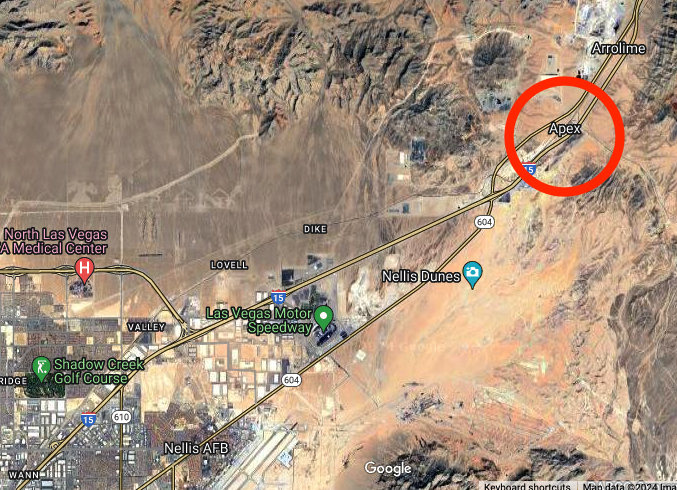A couple of clients shared with me the recent Biden administration proposal to repurpose as many as 25,000 acres of federal land to private ownership with the goal of creating affordable housing. They asked me what this means for the Las Vegas housing market.
Before I continue, a little background on the land supply in the Las Vegas Valley.
Approximately 90% of Clark County (where the Las Vegas metro area is located) and 85% of the entire state of Nevada are federally owned. The Las Vegas metro area is a small island of private land in an ocean of federal land. See the aerial map from 2022 below.

My estimate is that only about 16,000 acres of undeveloped land remain in the Las Vegas Valley. Depending on which article you read, between $26B and $30B is already under development or planned. The most recent announcement is a $1.8B Sony Pictures development on the west side of the valley.
Historically, Las Vegas has consumed about 4,000 to 5,000 acres a year. So, it won’t be many more years before the only growth option is redevelopment. We’ve already seen this on the east side, where the master-planned community Cadence is located.
Due to the dwindling land supply, land prices (especially where desirable for living) have increased steadily. Coupled with increasing housing demand due to the increasing population, home prices (new and existing homes) and rents have increased significantly over the years. This is great for investors but tough on people who need affordable housing.
Over the years, there have been many discussions about releasing federal land to the private sector for development. How much land has actually been transferred to private ownership?
Progress of Land Transfer Over the Years
The Santini-Burton Act was passed on December 23, 1980. This act enabled the purchase of private land in the Lake Tahoe Basin in exchange for BLM land in the Las Vegas metro area.
Some transfers have occurred. According to the Southern Nevada Public Land Management Act of 1998, 5,635 acres of federal land had been sold to private ownership as of 2003.
On October 20, 1998, 20,000 acres in the northeast of the Las Vegas Valley were transferred to private hands and is now called Apex. See the map below. This is an industrial area and not desirable for residential purposes due to its location and proximity to the Nellis Air Force Base. Today, only about 7,000 acres remain undeveloped.

In 2014, an effort was made to release 20,000 acres of federal land to the public. It did not happen.
The most recent discussion involved releasing 25,000 acres of federal land to the public over the next 50 years. Will this happen, or is it just another pre-election soundbite?
Time will tell.
The Las Vegas metro’s population growth is expected to average 2% to 3% per year, or about 40,000 to 50,000 new residents each year. This would mean about 20,000 new households or 20,000 additional housing units are needed each year. This demand far surpasses the speed of actual land transfer and the amount of land designated for transfer.
Will Congress expedite the process of releasing federal land in Nevada or even approve more land to be released?
I do not see any factors that will necessitate or motivate Congress to change their behavior pattern from the past decades. From their perspective, why should they?
Summary
For the foreseeable future, I do not see public land transfer as a factor affecting the trajectory of the Las Vegas housing market. It is simply too little and too slow compared to the city’s growth rate.





